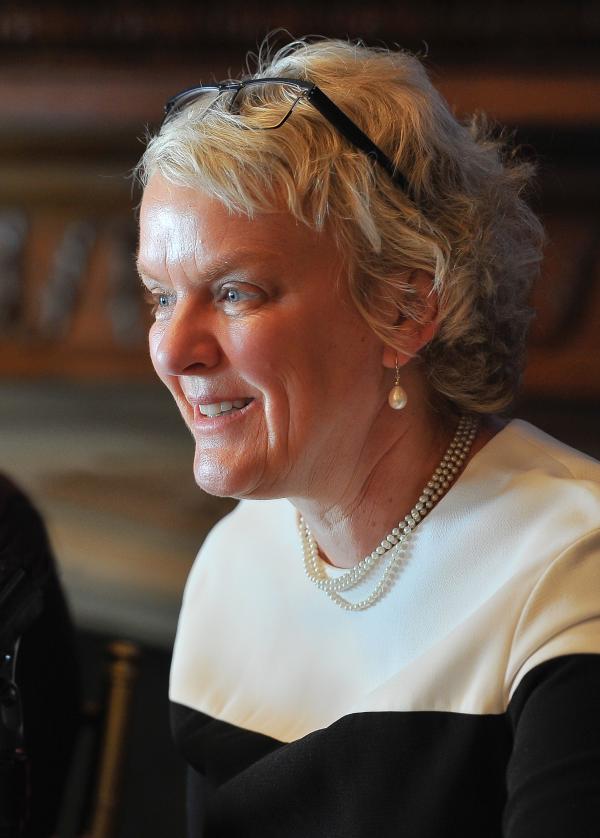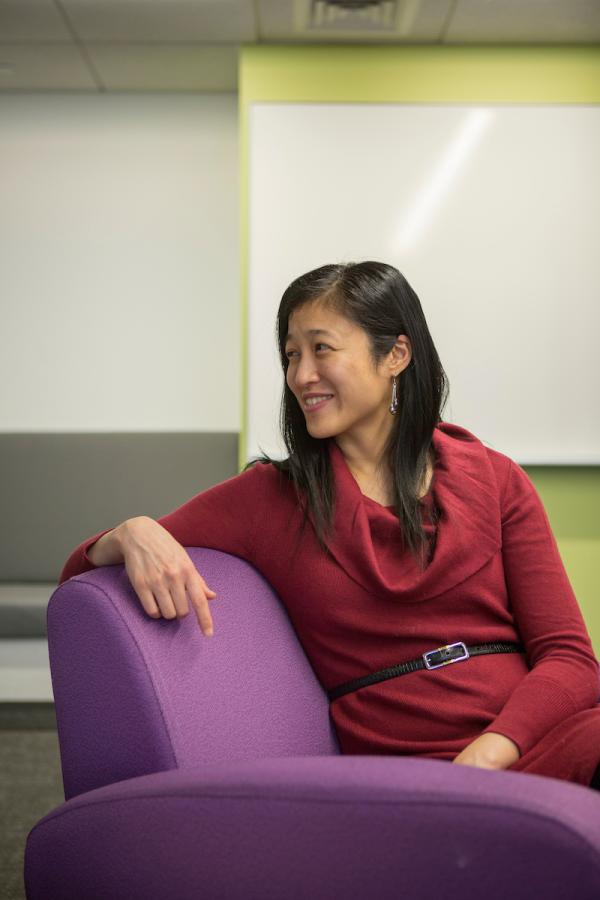
Crowds visiting Luna Park at Coney Island, New York, in the early 1900s could purchase tickets to view infants resting in “isolettes,” early versions of the incubator.
Tell a moving story and, often, the person listening will feel compelled to reach out and touch you. The simple gesture communicates understanding, empathy, and a reassurance that you are not alone.
Skin, our largest organ, is a powerful conveyor of connection. Yet how skin deciphers touch, discerning strokes from taps and taps from jabs and connecting these sensations to meaning and emotion, is only just beginning to be understood.
Touch has been notoriously challenging to study. Scientists who research visual and auditory systems have been able to selectively disable these senses in animal models as a means of penetrating how they function. But it is difficult to “disable” the skin and the sensations it propagates, so learning what happens in a system devoid of touch has been almost unattainable.
There is, however, a place where touch has been practically forbidden for most of the past century: neonatal intensive care units. It is in these units that the power of touch is being rediscovered.
Come One, Come All
If you were strolling the Boardwalk at Coney Island in 1903, you probably would have seen this sign: Infant Incubators with Living Infants. The 25-cent admission would have allowed you to see an array of glass-doored nests. Each nest held a tiny baby tucked safe and warm within.
The doctor in charge, Martin Couney, had gathered the babies from New York hospitals that didn’t have access to what Couney called “isolettes.” These rudimentary incubators had been inspired by poultry-hatching systems and invented by Couney’s colleagues in France, where their use had reduced the mortality rates of premature babies by 25 percent. During the nearly half-century run of his Coney Island sideshow, Couney cared for thousands of infants and saved the lives of most.
In those early days, the focus of neonatology was survival. Before the isolette, it was hard to keep full-term infants alive, let alone those born early or underweight. The incubator changed expectations, and as the twentieth century progressed, so did the technology. Doctors invented more specialized incubators and designed ventilators suitable for the tiny lungs of premature babies. One pioneering pediatrician, Mary Ellen Avery, the first woman appointed physician-in-chief at what was then Children’s Hospital Boston, discovered that preterm infants lacked a lung surfactant that helped with breathing, and she figured out how to introduce it therapeutically. Soon enough, every vital sign had a monitor, and advances in therapeutic interventions became almost commonplace.

“We wanted everything controlled, everything measured,” says Terrie Inder, the HMS Mary Ellen Avery Professor of Pediatrics in the Field of Newborn Medicine at Brigham and Women’s Hospital, chair of the Department of Pediatric Newborn Medicine at Brigham and Women’s and a professor of pediatrics at Massachusetts General Hospital. “Once we started keeping them alive, we exploded in terms of things we could do.”
In the United States today, babies born at just 22 weeks and weighing barely over a pound—about the size of a grapefruit—have a good chance of surviving. The same is not true for preterm births elsewhere, however. Each year throughout the world, 15 million babies are born early, and preterm birth is still one of the top causes of newborn deaths worldwide.
Of the preterm babies who do survive, many grow up with social and physical difficulties that range from problems with attention and social interactions to cognitive deficits and anxiety. “The preterm phenotype was well recognized,” says Inder, “but not what was causing it. It didn’t seem to be brain injury. It didn’t seem to be a drug that was given. It seemed more complex.”
Or, possibly, simpler.
Evidence being gathered by Inder, and by epidemiologists and neurobiologists, suggests that preterm babies need a nurturing touch.
Touchstone
A little more than three decades ago, an intervention called kangaroo mother care emerged in a maternity ward in Colombia. Incubators were scarce, so mothers and nurses strapped preterm babies to their chests to keep them warm. The technique improved survival.
Over the years, doctors have learned how a session of kangaroo care affects a baby physiologically: the infant’s heart rate, blood pressure, and respiration stabilize; signs of stress diminish; and an ideal body temperature is maintained.

Researchers and clinicians have continued to assess the potential benefits of this care; kangaroo mother care remains the most well-studied form of clinically defined nurturing touch. Grace Chan ’06, an HMS assistant professor of pediatrics at Boston Children’s Hospital and an epidemiologist at Harvard T.H. Chan School of Public Health, recently reviewed more than one thousand studies of this type of care, zeroing in on 124 that included mother–child skin-to-skin touch and neonatal outcome measures: Although babies benefit from kangaroo care provided by fathers, studies tend to focus on interventions involving mothers.
Chan found that preterm and low-birth-weight babies benefited from kangaroo mother care in several ways. Their risk of infection was lower than that of similar infants without skin-to-skin care as were their body temperatures and blood-sugar levels. The infants also showed lower respiratory rates and lower pain measures than their counterparts. In addition, they grew faster, and they were more likely to succeed at breastfeeding. Perhaps most impressive was the fact that babies involved in kangaroo care were 36 percent less likely to die than those without the benefit of the program.
Not only did kangaroo care affect babies’ health, it also reduced infant readmissions to hospitals by 58 percent. Although Chan’s analysis did not find that babies given kangaroo care went home earlier than other infants, some of the studies she reviewed did report shortened stays in neonatal intensive care units.
“There’s a benefit in trying to figure out how kangaroo mother care can be adopted and used more widely,” says Chan.
There’s also evidence that kangaroo care may have lasting effects on a baby’s health and well-being, results that could address some of the concerns associated with the preterm phenotype. A study conducted at Bar-Ilan University in Ramat-Gan, Israel, and published in 2014 in Biological Psychiatry, compared 146 premature infants, half of whom received kangaroo care for an hour a day each day for two weeks, and half who received standard incubator care. All the children in the study were evaluated repeatedly through age 10. Those who had received kangaroo care had lower levels of stress and anxiety and higher levels of cognitive development throughout that first decade.
Go Gentle
In situations where kangaroo care isn’t possible—when a parent isn’t available or a baby is very ill—nurturing touch may be a viable substitute. In 2012, Inder’s team conducted a pilot study of what is known as the M technique on infants born nearly three months early to observe their responses to just five or ten minutes of this technique’s gentle, stroking massage. Overall, the babies responded in ways that indicated this simple intervention had benefits: the babies’ heart and respiratory rates decreased.
“They need intensive care,” says Inder, “but they need their brains—and their bodies—to be nurtured.”
The sense of touch is structured much like other sensory systems. The retina of the eye, for example, contains specialized cells that detect light, process it, and then send those electrical messages to the brain for further interpretation. Similarly, the skin is packed with sensory neurons that detect touch and then send the sensory information to the spinal cord and brain stem for further processing and interpretation.
To many researchers, it seems clear that just as young brains need to gather and process visual information in order to allow the visual system to develop properly, the developing brains of infants need to experience touch to allow proper development of the somatosensory system, which governs the sense of touch.
“The idea that nurturing touch is essential for normal brain development seems obvious,” says David Ginty, the HMS Edward R. and Anne G. Lefler Professor of Neurobiology. Ginty studies the somatosensory system, which is the body’s system for gathering sensory information from the skin and processing it for behavioral and survival purposes.

For more than 20 years, Ginty investigated the development of the somatosensory system, learning about the different types of touch-sensing neurons and how they project to, or innervate, the skin.
There are, he says, seven or more types of touch neurons that send their processes into the skin and are sensitive to gentle touch. Each has its own specialty. Some respond when hairs protruding from the skin are deflected, others to indentation of the skin, others to stroking. They also send signals at different rates, some fast, some slow, some continuous. Some respond instantaneously, then go silent.
“It’s a remarkable combination of specialized but overlapping sensitivities from different types of tactile stimulation,” he says.
About ten years ago, however, he hit a wall. Not enough was understood about the structure and function of the touch sensing system to effectively study its formation.
“Development is a more compelling question when you understand what a system is developing into,” he says.
Fortunately, during the past decade, the tools of genetics have allowed Ginty and colleagues to probe the somatosensory system as never before. They have begun using genetic approaches to visualize the skin endings of the seven touch neurons by silencing different genes and precisely stimulating specific nerve cells in animal models to tease apart the system’s organization and function. These approaches are helping them understand how the brain processes signals into felt sensations and behavioral responses.
His lab recently uncovered a connection between gentle-touch neurons and anxiety. He and his team studied mice that had been genetically engineered to model autism-spectrum disorders. Each model involved knocking out or mutating a single gene that is associated with the disorder in humans. They found that the gene alterations affected the neurons activated by gentle touch by effectively removing volume control.
“The animals experienced a touch signaling overload,” says Ginty.
The mice also developed anxiety that persisted into adulthood. The anxiety developed, however, only if the gene mutation was introduced early, before the mouse had grown into an adult. If the mouse lost the gene as an adult, the animal experienced the hypersensitivity to gentle touch but did not develop anxiety. The finding suggests not only that there is a critical window during which touch sculpts the nervous system, but also, says Ginty, that “normal developmental touch may be required for prevention of this form of anxiety.”
The study opens a door for Ginty to begin to understand how touch influences brain development. He now has a model system in which he can reliably perturb the signals coming into the somatosensory system and explore the effects on long-term well-being.
“The opportunities in this field are incredible right now,” says Ginty. “I think over the next decade we’ll begin to understand the mechanisms behind the holistic response to light-touch processing, including the importance of nurturing touch for brain development.”
Can’t Touch This
Worldwide adoption of kangaroo mother care remains very low, at an estimated 5 percent, says Chan, who recently launched a study aimed at analyzing and refining programs intended to encourage kangaroo care adoption and use in hospitals in Ethiopia and India.

There are many reasons, however, why kangaroo care has not been more widely adopted in neonatal intensive care units. One is space. These types of care units are notoriously cramped places with little room for snuggling.
Even when space is available, nurses, doctors, and parents must learn how to move the fragile babies in and out of the incubators without disturbing critical tubes and monitors.
“I didn’t realize how challenging it would be to implement an intervention like kangaroo mother care,” says Chan. “Some ideas are adopted quickly, but the slower ones are usually those that require a lot of behavioral change, and those in which the benefits are not seen right away.”
Margaret McConnell, an assistant professor of global health economics at the Harvard Chan School, offers yet another barrier to implementing this type of care.
“There’s this sense that it’s very cost effective, but no one considers the cost to moms,” she says.
It can be difficult for families to find the time and money to support daily hospital visits, especially if time off from work is limited, if there are other children to care for, or if the neonatal care unit is far away.
“Even for affluent mothers, the costs can be significant,” says McConnell. To better assess whether certain interventions could help mothers whose babies might benefit from being involved in a kangaroo care program, McConnell and colleagues at the Harvard Chan School are collaborating with clinicians at Tufts University Medical Center on an initiative that provides cash support to mothers. Their aim is to see whether this intervention affects the time mothers are able to spend providing kangaroo care for their babies.
McConnell’s work raises a direct question: Is nurturing touch medicine? The clinical evidence suggests yes, as does the evidence being uncovered by neurobiologists who study touch.
Yet the idea is a sharp turn for some neonatologists, for whom the cost of investment may be measured in credibility.
“Neonatologists are trained as intensivists,” says Inder. “We like numbers and control. When we started to think about kangaroo care, some colleagues thought it made sense. Others said, ‘What happened to you? You used to be such a good neuroscientist. Now you’ve gone all fluffy.’ ”
But, she adds, “This is where the data are taking us.”
Elizabeth Dougherty is a Massachusetts-based science writer.
Images: Detroit Publishing Co. Collection/Library of Congress Prints and Photographs Division (top); Courtesy of Steve Jennings Photography (Inder); John Soares